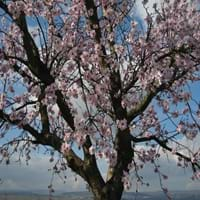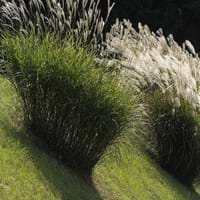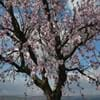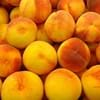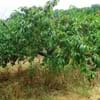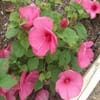Life Span
Perennial
Perennial
Origin
Northern Africa, Western Asia
Hybrid origin
Types
Bitter Almonds, Chinese Almonds, Green Almonds
Not Avaialble
Habitat
Dappled Shade, Sunny Edge, Woodland Garden Secondary
Lake Sides, savannahs
USDA Hardiness Zone
5-8
5-9
Sunset Zone
2b, 3b, 8, 9, 10, 12, 13, 14, 15, 16, 19, 20, 21
1a, 1b, 2a, 3a, 3b, 4, 5, 6, 7, 8, 9, 10, 11, 12, 13, 14, 15, 16, 17, 18, 19, 20, 21, 22, 23, 24
Habit
Oval or Rounded
Clump-Forming
Flower Color
White, Light Pink
Not Available
Flower Color Modifier
Bicolor
Bicolor
Fruit Color
Green
Not Available
Leaf Color in Spring
Light Green
Green
Leaf Color in Summer
Light Green
Light Green
Leaf Color in Fall
Light Green, Yellow green
Green, Purple, Burgundy, Bronze
Leaf Color in Winter
Light Green
Not Available
Leaf Shape
Egg-shaped
Grass like
Plant Season
Spring, Fall
Summer, Fall
Sunlight
Full Sun
Full Sun, Partial Sun
Type of Soil
Loam, Sand
Clay, Loam, Sand
The pH of Soil
Neutral
Acidic, Neutral
Soil Drainage
Well drained
Average
Bloom Time
Early Spring, Spring, Late Winter
Early Summer, Summer, Late Summer, Early Fall
Tolerances
Drought
Drought
Where to Plant?
Container
Ground
How to Plant?
Budding, Grafting
Rhizome division
Plant Maintenance
Medium
Medium
Watering Requirements
Do Not over Water, Water Deeply
Average Water Needs, Do Not over Water
In Summer
Lots of watering
Lots of watering
In Spring
Moderate
Moderate
In Winter
Average Water
Average Water
Soil pH
Neutral
Acidic, Neutral
Soil Type
Loam, Sand
Clay, Loam, Sand
Soil Drainage Capacity
Well drained
Average
Sun Exposure
Full Sun
Full Sun, Partial Sun
Pruning
Heading cuts, Remove damaged leaves, Remove dead branches, Remove dead leaves, Thinning
Remove damaged leaves, Remove dead branches, Remove dead leaves
Fertilizers
Apply 12-12-12 amounts
All-Purpose Liquid Fertilizer
Pests and Diseases
Almond brownline and decline, Almond kernel shrivel, Alternaria Leaf Spot, Hull rot
No serious insect or disease problems
Plant Tolerance
Drought
Drought
Flower Petal Number
Not Available
Single
Foliage Texture
Medium
Coarse
Foliage Sheen
Matte
Glossy
Attracts
Insects
Crickets
Allergy
Diarrhea, Mild Allergen, Nausea, Swelling in mouth
Not Available
Aesthetic Uses
Beautification
bank hedging, Mixed Border, Showy Purposes
Beauty Benefits
Acne, Blackheads, Good for skin, Moisturizing, Prevents greying of hair
Not Available
Environmental Uses
Air purification
Air purification
Medicinal Uses
Antiemetic, Antitumor, Emollient, Nutritive, Pectoral
No Medicinal Use
Part of Plant Used
Seeds, Stem
Whole plant
Other Uses
Blended with water to make almond milk, Oil is used for aromatherapy, Used for making dark grey to green dye, Used for producing cooking oil
Screen, Used as Biofuel, Used for making hedge
Used As Indoor Plant
No
No
Used As Outdoor Plant
Yes
Yes
Garden Design
Edible, Fruit / Fruit Tree
Hedges, Mixed Border, Screening / Wind Break
Botanical Name
PRUNUS dulcis
MISCANTHUS Giganteus
Common Name
Almond, Sweet Almond
Giant Silvergrass
In Hindi
मीठा बादाम
Giant Silvergrass
In German
Süße Mandel
Riesenschilf
In French
Amande douce
géant silvergrass
In Spanish
Almendra dulce
Giant Silvergrass
In Greek
Sweet Almond
Giant Silvergrass
In Portuguese
Amêndoas doces
Silvergrass gigante
In Polish
słodkich migdałów
Giant Silvergrass
In Latin
Almond Pulchra
Giant Silvergrass
Phylum
Magnoliophyta
Magnoliophyta
Class
Magnoliopsida
Lilopsida
Clade
Angiosperms, Eudicots, Rosids
Angiosperms, Commelinids, Monocots
Tribe
Amygdaleae
Andropogoneae
Subfamily
Amygdaloideae
Panicoideae
Number of Species
Not Available
Not Available
Properties of Sweet Almond and Giant Silvergrass
Wondering what are the properties of Sweet Almond and Giant Silvergrass? We provide you with everything About Sweet Almond and Giant Silvergrass. Sweet Almond doesn't have thorns and Giant Silvergrass doesn't have thorns. Also Sweet Almond does not have fragrant flowers. Sweet Almond has allergic reactions like Diarrhea, Mild Allergen, Nausea and Swelling in mouth and Giant Silvergrass has allergic reactions like Diarrhea, Mild Allergen, Nausea and Swelling in mouth. Compare all the properties and characteristics of these two plants. Find out which of these plant can be used as indoor plant. If you are interested to decorate your house and garden, find out aesthetic uses, compare them and select the plant which will beautify your surrounding. Along with beautification, try comparing medicinal and edible uses of Sweet Almond and Giant Silvergrass and you can choose the plant having best and most benefits.
Season and Care of Sweet Almond and Giant Silvergrass
Season and care of Sweet Almond and Giant Silvergrass is important to know. While considering everything about Sweet Almond and Giant Silvergrass Care, growing season is an essential factor. Sweet Almond season is Spring and Fall and Giant Silvergrass season is Spring and Fall. The type of soil for Sweet Almond is Loam, Sand and for Giant Silvergrass is Clay, Loam, Sand while the PH of soil for Sweet Almond is Neutral and for Giant Silvergrass is Acidic, Neutral.
Sweet Almond and Giant Silvergrass Physical Information
Sweet Almond and Giant Silvergrass physical information is very important for comparison. Sweet Almond height is 760.00 cm and width 760.00 cm whereas Giant Silvergrass height is 240.00 cm and width 120.00 cm. The color specification of Sweet Almond and Giant Silvergrass are as follows:
Sweet Almond flower color: White and Light Pink
Sweet Almond leaf color: Light Green
Giant Silvergrass flower color: Not Available
- Giant Silvergrass leaf color: Green
Care of Sweet Almond and Giant Silvergrass
Care of Sweet Almond and Giant Silvergrass include pruning, fertilizers, watering etc. Sweet Almond pruning is done Heading cuts, Remove damaged leaves, Remove dead branches, Remove dead leaves and Thinning and Giant Silvergrass pruning is done Remove damaged leaves, Remove dead branches and Remove dead leaves. In summer Sweet Almond needs Lots of watering and in winter, it needs Average Water. Whereas, in summer Giant Silvergrass needs Lots of watering and in winter, it needs Average Water.
